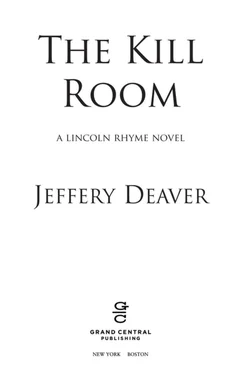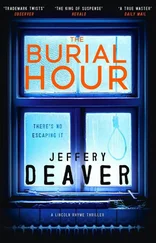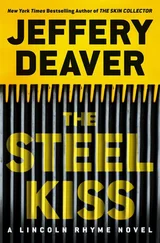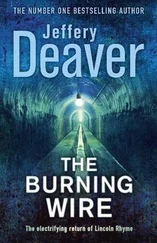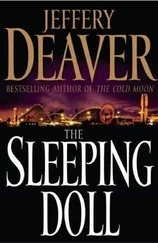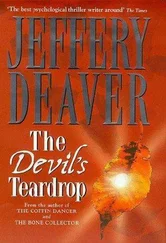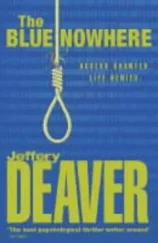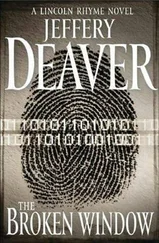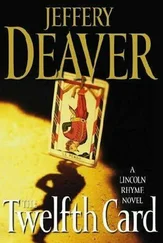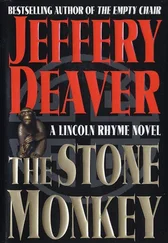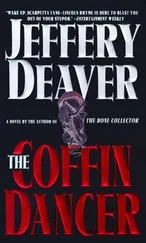“Yes, perhaps that’s true. But could you just give me some thoughts about—”
Rhyme said quickly, “I might be able to help…” His voice faded.
“Yes?”
“But in exchange I would like Corporal Poitier reinstated.”
“He hasn’t been precisely de-stated. The paperwork is sitting on my desk as we speak. But I haven’t signed anything yet.”
“Good. And I would need access to the Robert Moreno crime scene at the South Cove Inn, as well as the autopsy reports and the three victims’ clothing. And any relevant evidence collected there—the bullet in particular. I must see that bullet.”
A faint tap from the speakerphone. The assistant commissioner was clearly not used to negotiating.
Rhyme looked over the others, on whom the sun was beginning to fall in its searing glory. Pulaski gave him an encouraging grin.
After a pause—a gravid pause, Rhyme thought wryly—the assistant commissioner said, “Very good, Captain. You perhaps can come to my office now to discuss this matter?”
“Provided my associate is there too?”
“Your associate?”
“Corporal Poitier.”
“Of course. I’ll arrange it now.”
CHAPTER 47
THE ASSISTANT COMMISSIONER’S OFFICE at the Royal Bahamas Police Force was opulently shabby, more residential than official.
The chamber exuded colonial ambience, which made Rhyme feel right at home. His own working space, the laboratory née parlor, dated back to the era of Victoria. Here, though the RBPF building was newer, McPherson’s office too was cast in an earlier time—with a chintz sofa, a washbasin and pitcher, a large oak armoire, yellow-shaded lamps and, on the wall, pictures of men who had to be governors-general or similar officials. Several formal uniforms—one spotless white, one navy blue—hung stiffly on racks.
Some touches of modern times were present, of course: battered gray file cabinets, three mobile phones sitting on the functional beige desk and two impressive computers. Dominating one wall was a detailed map of New Providence Island.
The climate in here was warm—the air-conditioning was struggling—and the humidity intense. Rhyme deduced that McPherson kept the windows open most of the time and had artificially cooled the room in honor of his visitors this morning. The deduction was supported by another attendee—a chameleon sitting on the sill inside.
The large man, in a pressed khaki uniform, rose and shook Rhyme’s hand carefully. “You’re well, Captain Rhyme?”
“Yes. Some rest was just what I needed.”
“Excellent.”
He shook the hands of Pulaski and Thom as well. A moment later Mychal Poitier walked uncertainly into the room. Greetings all ’round.
The assistant commissioner sat and suddenly he was all business, regarding Rhyme with narrow, focused eyes. “Now, the student. Please, sir. You said murder.”
Rhyme said, “She was definitely killed intentionally, yes. It was planned out beforehand. And she was beaten before she died, I think.”
“Beaten?” Poitier tilted his head.
The criminalist said, “The clue is her jewelry. In the crime scene photos I noted that her bracelets, watch, finger and toe rings were gold. But her necklace was silver leaves. That seemed out of place, mixing the two.”
“What does—?” the assistant commissioner started. Then fell silent. Rhyme had frowned at the interruption.
“I think her assailant beat her badly and wanted to hide that fact. When he was finished, he drowned her and put the necklace on. He knew that scavenger fish’d be attracted to the shiny metal—I read about that on the flight here. I assume it’s in all the guidebooks: warnings not to wear anything flashy. Silver is particularly attractive because it resembles fish scales, more so than gold. The fish took care of the evidence of the beating by removing most of the facial skin.
“We know her killer planned this all out ahead of time because he brought the silver necklace with him.”
Poitier asked, “Why would he do that? There was no evidence of sexual assault.”
“Revenge maybe. But I have some thoughts that might lead us a bit farther. We’ll need to talk to the medical examiner. I’d like to know about the student’s postmortem blood workup.” When the assistant commissioner remained staring at Rhyme, the criminalist said to him, “It would be helpful to know that now.”
“Yes. Of course.” McPherson lifted the receiver from his desk phone and made a call. He spoke for a moment to a clerk or assistant, it seemed, then he said into the mouthpiece, “I don’t care if he’s in an autopsy. The body will be just as dead when he returns. Fetch him.”
After a brief pause McPherson resumed his conversation. He looked at Rhyme, holding the phone away from his ear. “The results are in. The coroner has the report in front of him.”
The criminalist asked, “Blood alcohol?”
The question was posed. Then: “Point zero seven.”
Pulaski said, “Not legally drunk but close.”
Rhyme asked quickly, “What was she drinking?”
Poitier said, “We found Bacardi rum, eighty proof, and Coca-Cola in the car. Both open.”
“Diet or regular? The soft drink.”
“Regular.”
Rhyme then said to McPherson, “Ask the coroner her postmortem glucose level. And I don’t want the vascular system results. Those aren’t reliable; glycolysis continues after death. I want the vitreous concentration.” He explained, “No glycolytic enzymes there.”
McPherson stared. In fact, everyone in the room did.
Rhyme continued impatiently, “I want the glucose level from the vitreous fluid in her eye. It’s standard procedure. I’m sure they ran it.”
The man posed the question. The answer was 4.2 milligrams per deciliter.
“Low normal.” The criminalist smiled. “I knew it. She wasn’t drinking recreationally. If she’d mixed Coke and rum the level would be higher. Her killer forced her to swallow some rum straight and then just left the soft drink bottle open to make it look like she’d been mixing them.” Rhyme turned back to the assistant commissioner again. “Drug screen?”
Again the question was posed.
“Negative for everything.”
“Good,” Rhyme said enthusiastically. “We’re getting somewhere. Now we need to look into her job.”
Poitier said, “She was a part-time salesclerk in Nassau.”
“No, not that job. Her job as a prostitute, I mean.”
“What? How do you know?”
“The pictures.” He glanced at Poitier. “The pictures that you showed me on your iPad. She had multiple injection marks on her arm. Her blood was negative for narcotics or other drugs, we just learned, so why the tracks? Can’t be insulin; diabetics don’t inject intravenously there. No, it was probably—probably, mind you, not for certain—that she had regular blood tests for sexually transmitted disease.”
“A prostitute.” The assistant commissioner seemed pleased by this. The American who’d died under his watch wasn’t an innocent student after all.
“You can hang up now.” Rhyme’s eyes dipped to the phone, hanging like a motionless pendulum.
McPherson did, after an abrupt goodbye to the medical examiner.
“So, our next step?” Poitier asked.
“To find out where the woman worked,” Pulaski said, “and picked up her johns.”
Rhyme nodded. “Yes. That’s probably where she met her killer. The gold jewelry was expensive and tasteful. She was in very good shape, healthy. Her face pretty. She wouldn’t’ve been a streetwalker. Check her purse for credit card receipts. We’ll see where she bought her cocktails.”
The assistant commissioner nodded to Mychal Poitier, who made a call, apparently to the evidence room or someone in the Detective Unit.
Читать дальше
